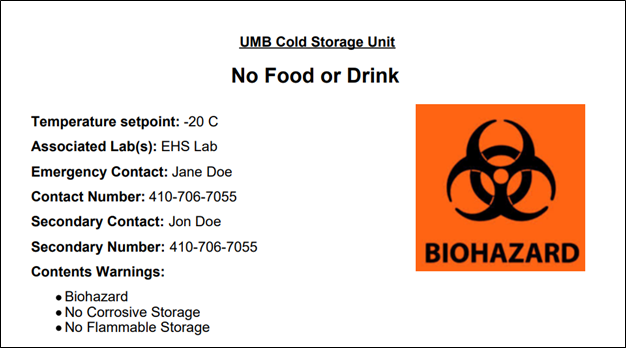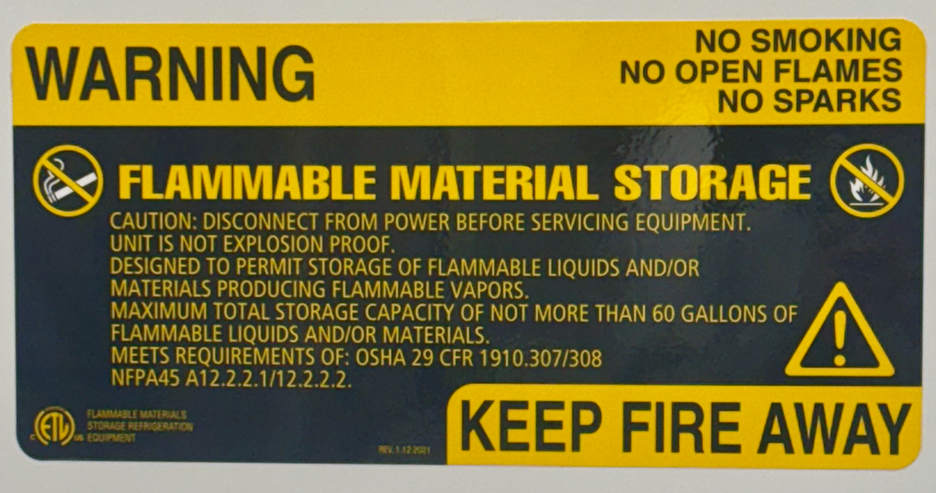UMB has several different types of cold storage units on campus. To comply with regulatory standards and to promote research continuity, EHS has created labels for refrigerators and freezers on campus.
You can create labels for your cold storage unit here. Once created, these labels can be printed onsite and then affixed to your refrigerators and freezers.

Frequently Asked Questions
What is the regulatory requirement for fridge and freezer labeling?
OSHA’s Bloodborne Pathogen Standard requires that any container housing biohazardous material must be affixed with the proper labeling. NFPA 45 Standard requires that all units housing hazardous materials must be labeled to show the hazards.
How does this support research continuity?
They will also provide essential contact information to the maintenance team and emergency personnel in the event of an electricity blackout or unit leak.
Will this be an EHS inspection finding?
While these labels are not currently required by EHS for the 2025 inspection cycle, we recommend posting labels on all freezers and refrigerators in your lab. Labels will be required starting in 2026.
What is included on the label?
Temperature set point, associated lab names, primary and secondary emergency contact information, content restriction warnings such as “No Food or Drink,” “Not Corrosive Storage, and “No Flammable Storage,” biohazard content warnings
What if my cold storage is rated for flammable storage?
If your unit has been specifically designed by the manufacturer to be spark-free and meet NFPA and OSHA requirements, you can elect to remove the “No Flammable Storage” warning from your label. Here is an example of what a flammable storage certification looks like:

My unit contains biohazardous materials. Do I do anything different?
OSHA’s BBP Standard requires all equipment that comes in contact with biohazardous material be labeled with the biohazard symbol on a fluorescent orange/red background. If you indicate on the label form that your unit contains a biohazard, the symbol and color will be added to the label. It is important to print the biohazard labels in color if possible.
Where does the label go and how do I secure it?
Once you have printed out a label for your unit it, cut it down to size and adhere it in an easy to find spot on the front of the unit. We recommend using clear packing tape, but as long as the label is secure and visible, anything works.
Why does the label need to have contact information on it?
There are many reasons that fridges need to have emergency contact information. In the event of a power failure, someone may contact you to save whatever materials may be inside. In the event of a leak, someone may contact you for more information about the contents of the fridge.
Cold Storage Sustainability
A conventional ultra-low temperature (ULT) freezer uses approximately 20 kWh of energy per day, as much as an average U.S. household. The university’s 700+ ULT freezers use an enormous amount of energy while furthering important health sciences research. So what actions can be taken to reduce the massive environmental footprint of this intensive equipment? Simply “chilling up” your ultra-low temperature (ULT) freezer from -80°C to -70°C can reduce energy consumption by 30-40% and help prolong the lifespan of the freezer. Learn more about ULT freezer efficiency on the UMB Office of Sustainability website. For additional cold storage tips, visit the My Green Lab website.


